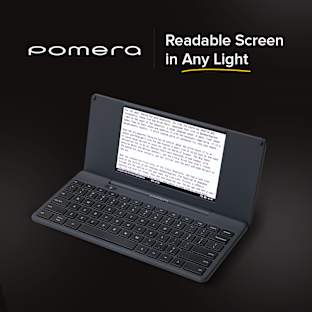------------------------------------------------------------------------------------------------------------
106 Color Images and Special Items
Our expanded and updated Wonders in the Sky contains 106 color images of rare photographs and illustrations. These images have been rendered from high quality digital images to create a work of lasting beauty as well as science. Towards this end, you will also receive the following special items for your contribution:
A facsimile commemorative token (coin) of French origin from 1648 depicting a legendary shield from the sky
![]()
The token pictured above, which was struck in 1648, shows a disk with a thick border. This kind of object or medal (“jeton” in French) has been mentioned in books and magazine articles as a flying shield either observed in the clouds, passing over a wide landscape or (as in this case) protecting it from spears directed at its curved surface from the sky.
The jeton is a little larger than a U.S. quarter and is similar to many tokens produced in Europe around that time for religious and educational purposes. Rather than a flying saucer (some sort of “Roman Roswell,” as some have suggested), it is thought to represent the “Shield of Numa.”
It is said that on March 1st, 707 BC, during the outbreak of a plague, the second king of Rome, Numa Pompilius, witnessed the fall of an oval shield from the sky during a ceremony. Somewhat astonished, he sought advice from the nymph Egeria and the nine Muses, who assured him that Jupiter had dropped it as a sign of his benevolence. The pestilence soon came to an end, so the grateful king had eleven identical copies made by an armourer, and those were used in dances and celebrations every year. Written around the edges of this coin is the Latin phrase “Resistit paucis obruitur pluribus,” which means “It withstands a few but is overwhelmed by the many.”
Reports of such “flying shields” figure prominently in Wonders in the Sky. We believe this intriguing coin is a worthy accessory minted in support of the research.
A folder of rare 17th and 18th century European broadsheets and placards
Presented are a folder of rare broadsheets, the newspapers of the time, that functioned as mass media, most of them from 17th and 18th century Germany, depicting celestial events observed in central Europe, France and Italy. Produced in facsimile, each one consists of an engraving of the scene (typically enhanced with mythological, allegorical or religious figures) with a text explaining the significance of the event for the benefit of the public.
These records have taken the form of paintings on the walls of caves, carvings in stone walls, statues and stelae, or writings on papyrus and parchment. After the invention of paper and the printing press, the observations could be shared with an eager and curious public. This led to widely distributed poster-size documents known as broadsheets, broadsides or placards. These were posted as notices in a public place or sold as individual sheets.
Please see two of the placards below, and enjoy these rare items that are both pieces of art and critical components of the historical UFO record.
![]()
![]()
------------------------------------------------------------------------------------------------------------
Highest Production Values
TRIM: 8 1/2 x 11; PAPER: text: 157 gsm acid-free matt artpaper; Endpapers: 140 gsm woodfree paper; SLIPCASE: Saifu cloth over 3 mm board with stamping on front and spine; JACKET:: 157 gsm glossy artpaper; BINDING: smythe sewn, sq back, case bound, head and tail bands.
Work on the manuscript and a prototype of the book is now complete and represents the culmination of many years of careful research. We will deliver the highest quality production values, and the books, coins, and placards will arrive in distinctive and protective packaging.
Jacques and Chris are very excited to bring this book to life, and more importantly, bring this updated work of UFO scientific research to you. For everyone interested in UFOs, this is an amazing opportunity that we hope you will take advantage of. This limited edition, updating the Penguin edition, will contain 500 copies signed, numbered and slipcased -- and of course, also a facsimile coin and a folder of rare broadsheets and placards will accompany each book. These magnificent thank-you gifts will be delivered in late Spring 2016.
Additional information about the authors:
![]()
Jacques Vallée and Chris Aubeck at a conference in Madrid, May 2015
Jacques Vallée holds a master’s degree in astrophysics from France and a Ph.D. in computer science from Northwestern University, where he served as an associate of Dr. J. Allen Hynek, the scientific consultant to the U.S. Air Force on the UFO problem. He is the author of several books about high technology and unidentified phenomena, a subject that first attracted his attention as an astronomer in Paris. While analyzing observations from many parts of the world, he became intrigued by the similarities in patterns between modern sightings and historical reports of encounters with flying objects and their occupants in every culture. The result was the seminal book Passport to Magonia, published in 1969. Later, Jacques would become the model for the French scientist character in Stephen Spielberg's Close Encounters played by François Truffaut.
After a career as an information scientist with Stanford Research Institute and the Institute for the Future, where he served as a principal investigator for the groupware project on the Arpanet, the prototype of the Internet, Jacques Vallée cofounded a venture capital firm in Silicon Valley, where he works.
Chris Aubeck was born in London. His interest in the historical and sociological aspects of unexplained aerial phenomena began at an early age. He moved to Spain at age 19 and now lives in Madrid, where he works as an interpreter and English teacher at the Madrid Development Institute. A student of folklore and philology, he has helped compile the largest collection of pre-1947 UFO cases in the world. He has spoken on his research in many articles and on public radio. In 2008 he was awarded a prize for his contributions to the field by the Spanish organization Fundación Anomalía.
In 2003, Aubeck cofounded a remarkable collaborative network of librarians, students, and scholars of paranormal history on the Internet. This group, known as the Magoniax Project, extends from North and Central America to Russia and Germany. It has accumulated thousands of references, searched media archives in several languages, and gathered hundreds of rare documents, scientific reports, and newspaper clippings from the last four hundred years.
Copyright © 2015 by Jacques Vallée, Documatica Research, LLC and Chris Aubeck






































































